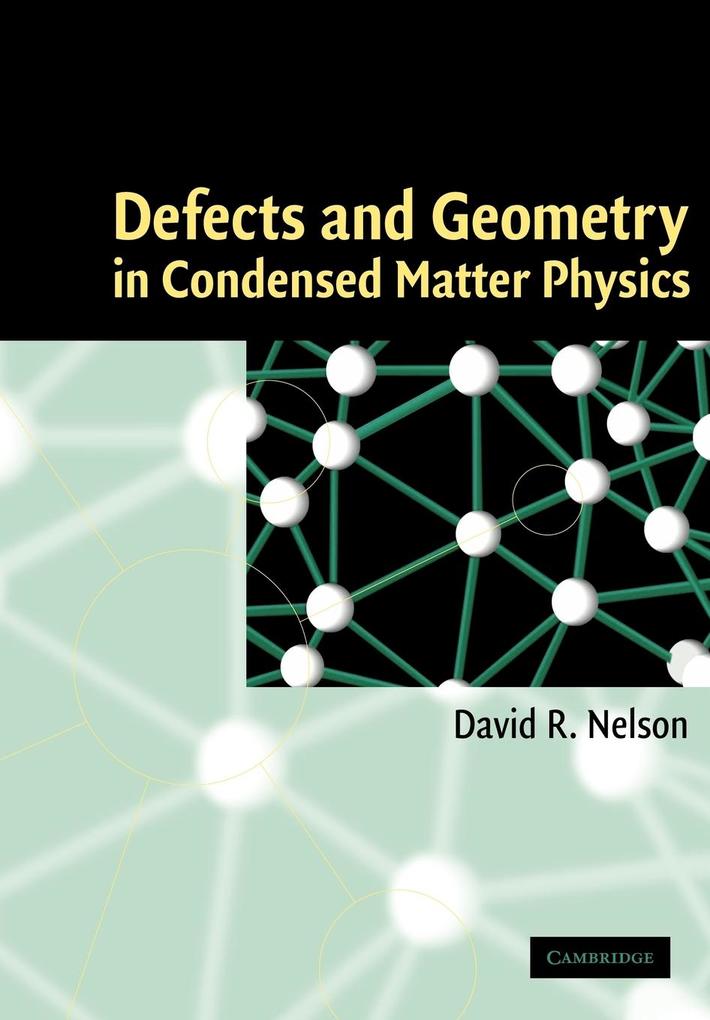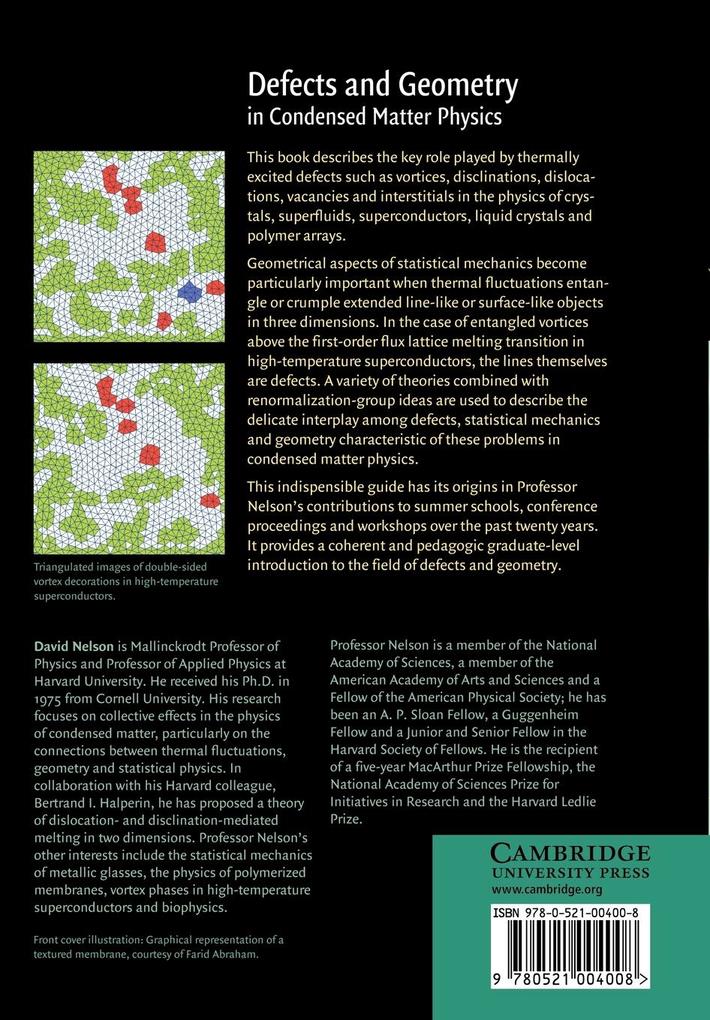Defects and geometrical patterns embedded in orderly arrays of atoms and molecules explain important everyday phenomena such as why soap is slippery, why steel is strong, and how a liquid crystal display device works. An understanding of how to pin vortex defects in superconductors is essential for applications such as magnetic levitation and improved magnetic resonance imaging devised for medical diagnosis. This book discusses the crucial role played by defects and geometry in disrupting order in solids, superconductors, superfluids, liquid crystals and polymers.
Inhaltsverzeichnis
1. Fluctuations, renormalization and universality; 2. Defect mediated phase transitions; 3. Order, frustration; 4. The structure and statistical mechanics of glass; 5. The statistical mechanics of crumpled membranes; 6. Defects in superfluids, superconductors and membranes; 7. Vortex line fluctuations in superconductors from elementary quantum mechanics; 8. Correlations and transport in vortex liquids; 9. The statistical mechanics of directed polymers.














